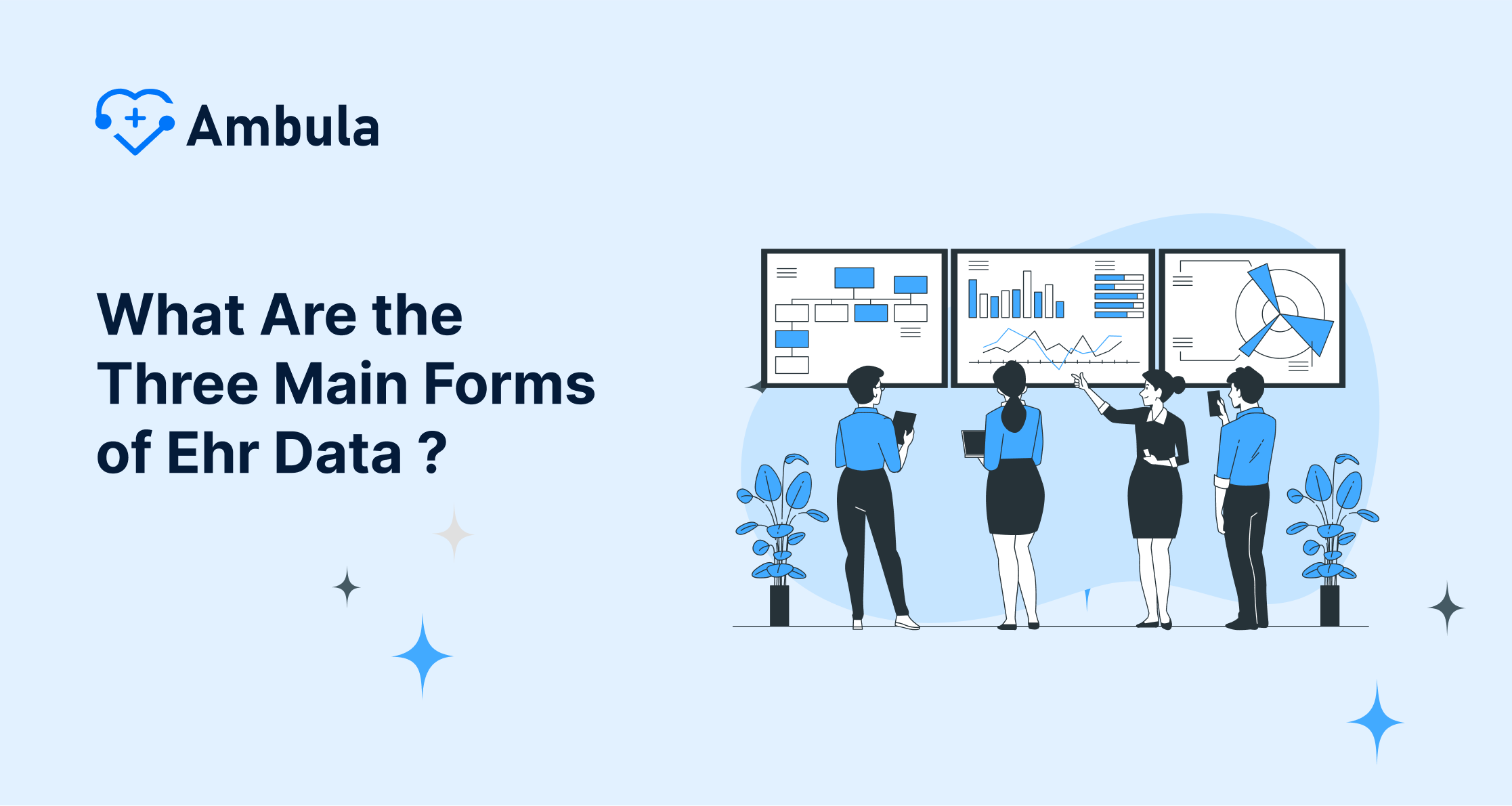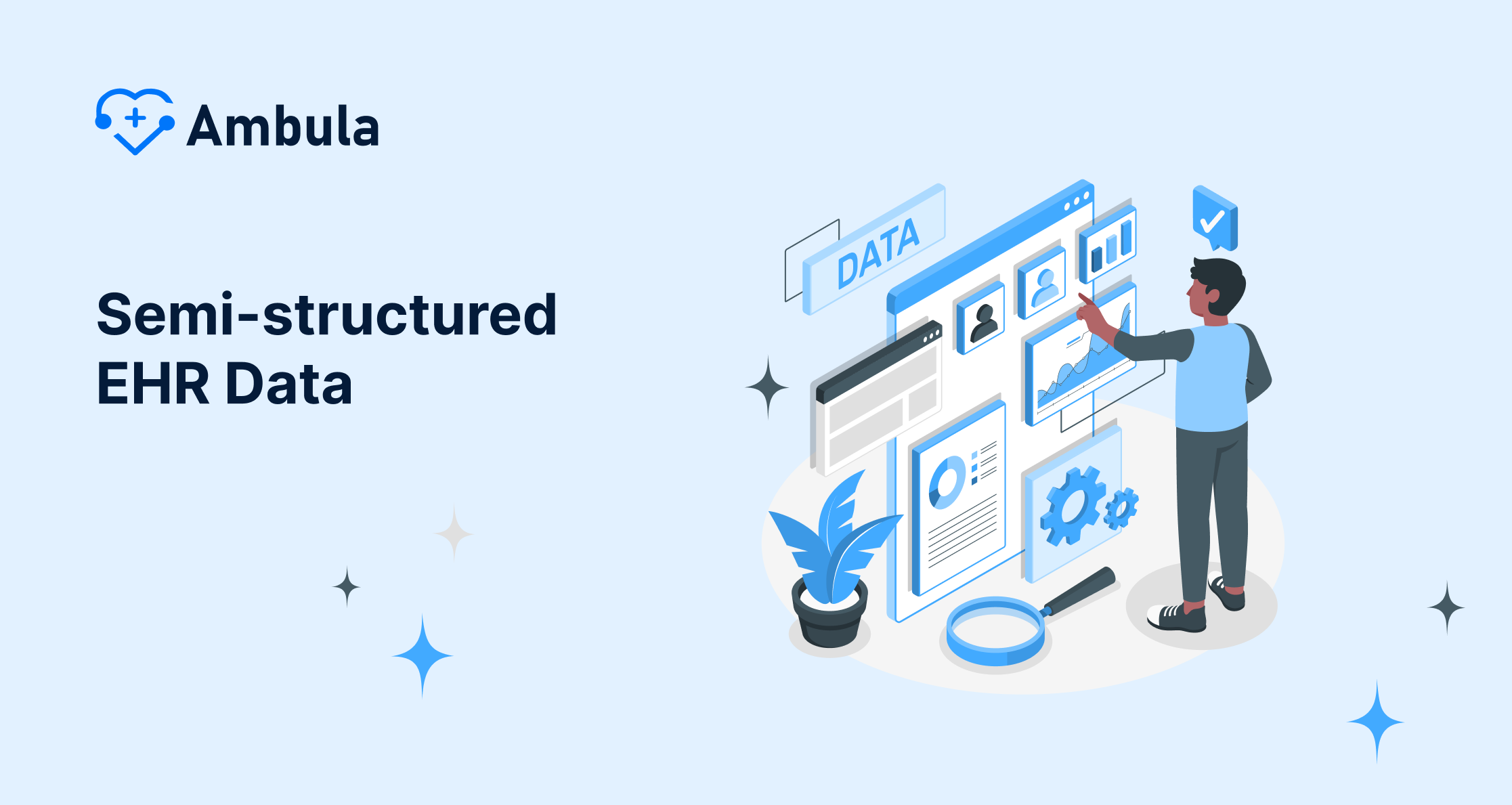
When it comes to managing patients’ health records, technology has stepped up to the plate. You might have heard of EHR or Electronic Health Records, but let’s break it down further and explore the EHR data model.
Electronic Health Records (EHR), also known as electronic medical records or digital medical records, are digital versions of patients’ paper charts. Being real-time and patient-centric, they include a broader view of the patient’s care. These digital records provide comprehensive data elements that can follow a patient through various healthcare settings, from medical histories, diagnoses, lab test results, and medications to appointment histories, all stored in an EHR database or electronic health record database.
If we talk about the healthcare sector, the use of electronic health records provides numerous benefits. An EHR system makes information readily available through efficient EHR data storage, resulting in more efficient care. Statistics have shown that 88% of physicians report that EHR produces clinical benefits for the practice. It supports greater care coordination and accurate decision-making through clinical decision support and has efficiently improved patient participation.
Grasping the Composition of EHR Info
Peek into EHR and you’ll see each file has its own info setup. Breaking it down, EHR info is divided into two key data forms: structured and unstructured.
Your EHR system holds a blend of these kept in check with solid data rules. You’ve got clear-cut numbers like folks’ ages and money details in EHR to the less clear stories healthcare workers scribble down. But hang on why’s this setup a big deal? It’s super important because it decides how easy it is to share, look for, and study EHR info with EHR analysis and data study methods.
You might be curious why we bother with data standards and making everything the same in an EHR system, right? Here’s the scoop. Standardizing all that EHR data – you know making it normal – really ramps up the security and makes it play nice with other systems, not to mention how much simpler it gets to handle. Nailing the standardization part turns EHR systems into these big info hubs that you can get around in and dig through without a headache.
Creating a standard everyone agrees on isn’t simple at all. Despite tough spots, we’ve seen real headway. The Centers for Medicare & Medicaid Services reported that more than 95% of hospitals had certified their EHR technology by the year 2017.
Right now, the tough parts are handling, sorting, and making sense of the huge piles of clinical and patient info jammed in EHR systems. The key move to get something out of it is to get how EHR data is put together. ‘Cause let’s be honest structured EHR data’s like a gold mine of super valuable stuff that’s just there waiting for someone to find it.
EHR Data Without Structure
Okay so we’re diving into unstructured EHR data now. Think of it as the stuff that doesn’t stick to any particular format. In places where doctors and nurses work, it’s kinda like those quick notes taken while someone’s getting a check-up, whatever gets discussed on an unexpected call, or the quick points written down when you check on someone. It’s all that important health info that’s just written down, however.
Unstructured EHR data, well, is a bit like a potluck; there’s room for everything from stories about a person’s past health to pictures from an X-ray. People in the know reckon about 80% of the info in medical records is this unstructured kind. That’s a whole bunch of info just chilling, waiting for the clever tech to pull out the stuff we need to know.
The charm of unstructured EHR data is in the rich details it packs. Sure, handling it could get tricky, yet these untouched insights hold the power to enhance healthcare services, medical studies, and the health results of patients.
Still, perks come with a few downsides. Major hurdles with unstructured info include keeping it stored, finding stuff in it, and getting it to work with other systems. It’s a tough job to organize, sift through, or dig into unstructured EHR info. So, getting useful stuff out of this kind of data often proves tough.
Dealing with messy EHR data starts to get easier when we bring in cooler tech like “artificial intelligence” and “natural language processing”. It’s kinda like digging out the treasure buried in these scattered info bits and using them to give people top-notch health treatments.
Structured EHR Data
Into the world of structured EHR data, we delve. It’s the more organized sibling in the EHR data family. As the name implies, structured EHR data is formatted in a way that can be easily sorted and searched. In the psychiatric field, structured EHR data includes standardized assessment scores, medication lists, and treatment plans. Implementing psychiatry EHR software tailored to mental health ensures this data is securely stored and easily accessible, helping clinicians deliver better care.
When you think of structured EHR data, think of lab results, medication lists, or diagnosis codes. Each data element is tailored to fit specific categories, allowing streamlined communication across various health information systems through data exchange and data integration.
This structure comes with obvious advantages. For one, it’s much easier to analyze and interpret. It can be sequenced, classified, and retrieved with relative ease through efficient data retrieval methods. That’s why structured data is commonly used for quality reporting and population health management.
But don’t rush to convert your entire EHR to structured data yet. While it conveniently fits into predefined fields, structured EHR data can sometimes lack unstructured data’s rich context and narratives. It’s like receiving the skeleton facts without the connective tissues of patient narratives.
Remember, while managing structured EHR data may seem less complex, its ability to relay comprehensive, contextual patient information is inherently limited. Each form of EHR data has its place in providing a holistic understanding of patient health. It’s all about finding the right balance. After all, you want the best for your patients, often combining structure with a healthy dose of narrative.
Semi-structured EHR Data
And then, we have semi-structured EHR data, the middle ground between structured and unstructured data. This third data type is more flexible, allowing for some structure while accounting for narratives.
Laugh all you want at the term ‘semi-structured’ – it’s like structured data with a wild streak. Think of progress notes that utilize some form of templating or coding but also contain a narrative component or reports that include tables or lists among paragraphs.
Semi-structured data uniquely bridges the gap between rigid structure and invaluable context. It allows certain analytical elements without constraining the users to a strict format – the best of both worlds!
So, what’s the catch? With these midway characteristics comes the challenge of categorization. This data type may not fit neatly within the parameters set by structured or unstructured categories, posing challenges to standard searches, filter applications, and common analysis techniques.
But don’t grumble just yet. Despite the challenges, semi-structured EHR data opens up a new door of possibilities. Once you understand the potential it brings, it becomes another critical tool in improving patient care. It’s about harnessing and using this data smartly to contribute to a stronger, complete understanding of patient health and care.
Conclusion & the Future of EHR Data
So, let’s recap what we’ve gleaned today about the different types of EHR data – unstructured, structured, and semi-structured. Each type’s unique characteristics are critical in providing a comprehensive picture of patient health.
Some naysayers might perceive this as an ‘information overload’, but with the right technological tools and strategic analysis, the potential advantages outweigh the complexities.
Talking about the future – hold on, it looks promising. Research already foresees a potential surge in EHR users as the healthcare industry increasingly recognizes the benefits of such a system.
Advancements like Artificial Intelligence (AI) and Machine Learning (ML) are coming to the forefront, transforming how you navigate, analyze, and interpret EHR data. AI isn’t just a buzzword in health IT. It’s set to revolutionize EHR by automating data capture and EHR data collection, improving data quality and consistency through data validation and data mapping, providing predictive analysis, and improving data privacy and HIPAA compliance. These technologies can potentially simplify complex tasks and reduce the time needed for data management in healthcare systems.
While these seem like lofty promises, the reality isn’t light-years away. In 2020, an Accenture survey established that 81% of healthcare executives believe AI will work alongside humans in the next two years.
The sky’s the limit when it comes to harnessing the potential of EHR data. As technology molds itself around EHR, the possibilities are exciting, pushing to provide the best patient care. Remember, every typed note, every coded diagnosis, every clicked checkbox is a piece of the larger EHR puzzle with unimaginable possibilities for the future of healthcare and healthcare data modeling.






